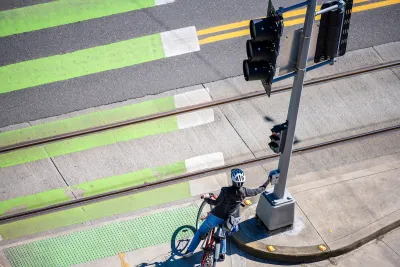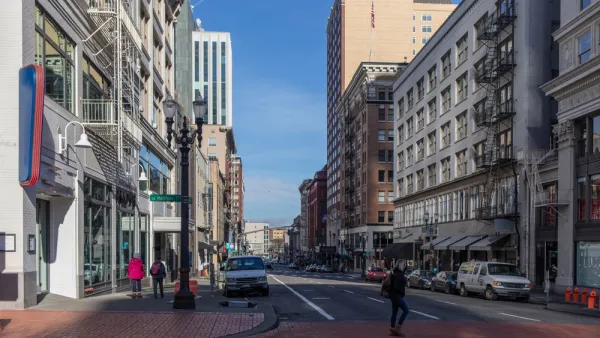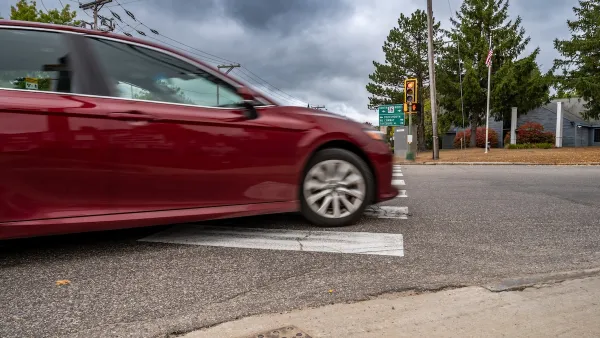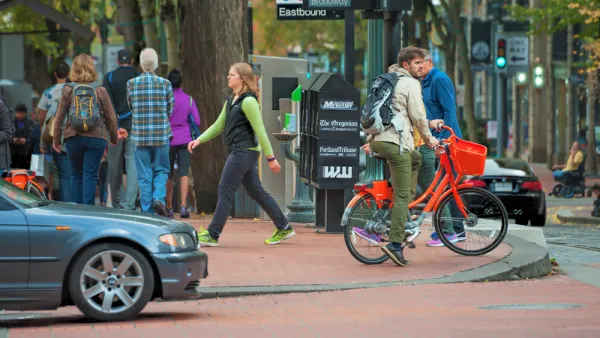A city audit found that the program has failed to reduce traffic deaths and could benefit from a more systematic approach. Meanwhile, PBOT says it needs more state funding to support road safety projects.

A November audit of the Portland Bureau of Transportation’s Vision Zero program calls on the bureau to do more to evaluate the program’s progress as traffic deaths in the cities continue to rise.
As Jim Redden reports in Portland Tribune, “The audit credited PBOT with reducing speed limits across the city and installing more red light enforcement cameras. But it said the effectiveness of some other safety improvements were not being measured.”
The audit calls for a “more systematic approach” that would help the department understand which safety projects are succeeding and which are ineffective.
PBOT spokesperson Dylan Rivera agreed with the assessment but called on the state legislature to increase funding for transportation and safety efforts, saying, “We need the state Legislature to make a big investment in transportation in 2025, by increasing the funding available from the state highway fund that provides the formula funding that cities and counties across Oregon depend on for basic safety, maintenance and livability needs.”
FULL STORY: PBOT: Vision Zero need more money to succeed

National Parks Layoffs Will Cause Communities to Lose Billions
Thousands of essential park workers were laid off this week, just before the busy spring break season.

Retro-silient?: America’s First “Eco-burb,” The Woodlands Turns 50
A master-planned community north of Houston offers lessons on green infrastructure and resilient design, but falls short of its founder’s lofty affordability and walkability goals.

Delivering for America Plan Will Downgrade Mail Service in at Least 49.5 Percent of Zip Codes
Republican and Democrat lawmakers criticize the plan for its disproportionate negative impact on rural communities.

Test News Post 1
This is a summary

Test News Headline 46
Test for the image on the front page.

Balancing Bombs and Butterflies: How the National Guard Protects a Rare Species
The National Guard at Fort Indiantown Gap uses GIS technology and land management strategies to balance military training with conservation efforts, ensuring the survival of the rare eastern regal fritillary butterfly.
Urban Design for Planners 1: Software Tools
This six-course series explores essential urban design concepts using open source software and equips planners with the tools they need to participate fully in the urban design process.
Planning for Universal Design
Learn the tools for implementing Universal Design in planning regulations.
EMC Planning Group, Inc.
Planetizen
Planetizen
Mpact (formerly Rail~Volution)
Great Falls Development Authority, Inc.
HUDs Office of Policy Development and Research
NYU Wagner Graduate School of Public Service





























